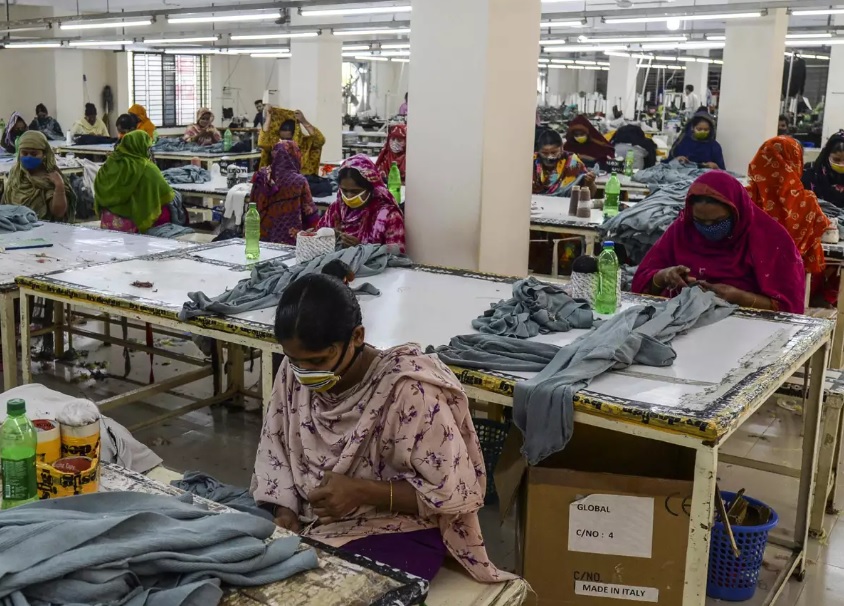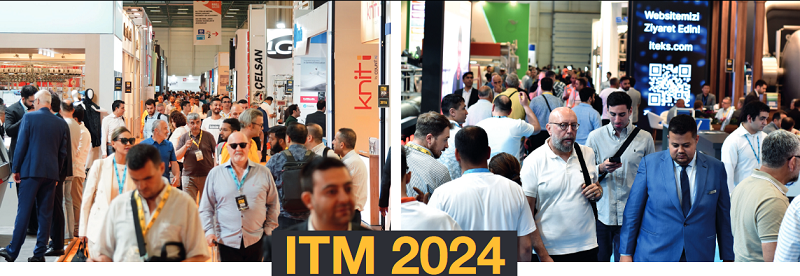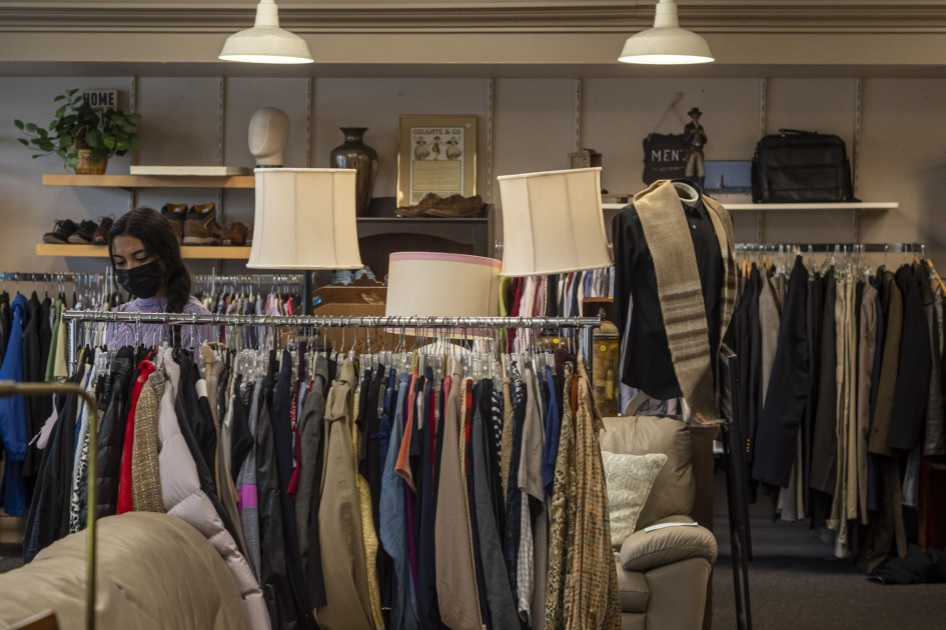FW
The global textile colorant market is projected to grow at a CAGR of 5.4 per cent from 2022-32 and reach approximately $11,590.4 million by 2032. As per a report by Future Market Insights, the growth of this market will be driven by an increasing global demand for clothing, and rising disposable incomes.
Accounting for about 48 per cent of global textile production, the East Asia region is expected to dominate the market growth with significant contributions from countries like India and those in the ASEAN region. The demand for textile colorants from these countries is anticipated to represent around 9 to 11 per cent of global colorant consumption.
Key trends driving the growth in this region include a rising demand for technical textiles—specialised fabrics designed for specific applications in industries like healthcare, sports, and engineering. Geotextiles, a type of technical textile used in geotechnical applications, are gaining popularity due to growing environmental concerns. Additionally, neon dyes, which offer highly reflective properties, are increasingly used in athletic apparel to enhance safety.
However, the market faces challenges related to sustainability. The dyeing process is water-intensive, with over 1,000 liters of water needed to produce just 1 kg of dye. This has led to environmental degradation and prompted strict regulations from environmental authorities and governments, which are pushing for the use of natural dyes and biodegradable materials.
The market is fragmented, with major players offering over 10,000 variants of textile colorants. Leading companies are focusing on product innovation, partnerships, and geographic expansion, particularly in emerging economies, to strengthen their market position. Investments in research and development of sustainable products are also a key focus, as companies aim to reduce their carbon footprint and meet regulatory requirements.
A global leader in the retail industry, the Apparel Group has unveiled the latest Back-to-School collection of its homegrown brand R&B. Combining character-inspired designs with functional fashion, this collection is tailored for students from preschool through high school. It offersthem budget-friendly options without comprising on style. The range includes wrinkle-resistant pinafore dresses, skirts, school shirts, and pants, ensuring students maintain a neat appearance throughout the day. The footwear line features ballerinas and sneakers designed for comfort, incorporating advanced cushioning technology and contemporary designs.
A standout item in the collection is the 5-in-1 character trolley set, available for AED 99. This set, featuring popular characters like Batman, Spiderman, Superman, Stitch, Frozen, and Hello Kitty, includes a trolley backpack, lunch bag, tiffin box, water bottle, and accessory pouch. Other offerings include character backpacks priced at AED 70, fashion trolleys at AED 160, standard backpacks at AED 65, and a variety of stationery items such as pencil cases and notebooks.
The 2024 Back-to-School Collection is now available at all R&B stores across the GCC, as well as online at randbfashion.com, ensuring students can step into the new school year with style and confidence.

The whirring of sewing machines fills the air once more in Bangladesh's garment factories, signaling a cautious return to normalcy following a period of political turbulence. The industry, which contributes a staggering 83% to the nation's export earnings, has been grappling with the fallout of widespread protests that led to the ousting of Prime Minister Sheikh Hasina.
Resumption of prduction and the road to recovery
"We lost a total of four days," laments Miran Ali, Vice President of the Bangladesh Garment Manufacturers and Exporters Association (BGMEA). "It is too early to make an estimate of the loss. There was little physical damage to factories, but the disruption has been significant." The BGMEA estimates that the four-day shutdown has cost the industry upwards of $1 billion in lost production.
Factories supplying major Western brands such as H&M, Zara, and Carrefour were forced to close their doors during the unrest. H&M, which sources from around 1,000 factories in Bangladesh, has assured its suppliers that it will not seek discounts due to the delays. "We welcome the steps that have been taken toward greater stability in Bangladesh," an H&M spokesperson told Reuters. "Our suppliers' factories are gradually reopening."
Workers eager to return
For the millions of garment workers in Bangladesh, mostly women, the reopening of factories is a welcome relief. "We are poor people depending on daily wages and overtime," says Razia Begum, an employee at Urmi Garments in Dhaka. "If we sit back home, how can we run our families?"
Global supply chain disruptions and shifting dynamics
The unrest in Bangladesh has sent shockwaves through the global garment industry. Hula Global, an Indian apparel producer, has announced that it will be redirecting production for the rest of the year from Bangladesh to India to avert risk.
Pankaj Tuteja, head of operations at Dragon Sourcing, a firm that helps companies find suppliers, believes that while major brands like Zara and H&M are likely to stick with Bangladesh, some smaller firms may look elsewhere. "Once the client, then the factories, have invested so much time and money they will not just immediately run back, even when there's political stability," he says. "That can have a long-term impact for Bangladesh."
Opportunities for competitors and long-term implications
The crisis in Bangladesh has created opportunities for other garment-producing nations, particularly India. According to a report by CareEdge, India could gain monthly export orders worth $200-250 million in the short term and around $300-350 million in the medium term.
Krunal Modi, Director at CareEdge Ratings, believes that India is well-positioned to capitalize on the situation. "The recent budget announcement on skilling programs and the potential Free Trade Agreements with the UK and the EU will further strengthen India's position in the global RMG market," he says.
The Path Forward: Rebuilding and resilience
While the reopening of factories is a positive sign, Bangladesh's garment industry faces a long road to full recovery. The country needs to restore political stability, ensure worker safety, and rebuild its reputation as a reliable supplier.
The International Monetary Fund (IMF) expects the ready-made garments industry to account for 90% of Bangladesh's $55 billion annual exports in the financial year 2024. The industry's ability to bounce back from the recent crisis will be crucial for the country's economic future.
A Turning Point for Bangladesh's Garment Industry
The reopening of Bangladesh's garment factories is a step in the right direction, but the industry remains vulnerable. The country needs to address the root causes of the recent unrest and create a stable and secure environment for businesses to thrive. Only then can Bangladesh reclaim its position as a global leader in the garment industry.

The ITM 2024 International Textile Machinery Exhibition, held from June 4-8 at the Tuyap Fair and Congress Center in Istanbul, solidified its status as a premier global event in the textile machinery industry. The exhibition, organized in partnership with Tuyap Tum FuarcılıkYapım Inc., Teknik Fairs Inc., and in cooperation with the Textile Machinery and Accessories Industrialists Association (TEMSAD), set new benchmarks with a significant increase in exhibitors, visitors, and business deals.
Unprecedented participation and global reach
This year’s event spanned 13 halls, covering an impressive 120,000 square meters. ITM 2024 drew participation from 1,385 companies and company representatives from 71 countries, attracting 66,200 visitors from 99 countries. Notably, 45 per cent of these visitors were international, highlighting the exhibition’s global appeal. The diversity in visitor demographics was further enhanced by Istanbul’s strategic location and liberal visa policies, making it easier for professionals from various countries to attend.
A key factor contributing to the diverse attendance was the ease of travel to Istanbul, coupled with the absence of visa restrictions. Visitors from across the globe, including countries as far-flung as Afghanistan, Brazil, Japan, and Zimbabwe, converged in Istanbul, making ITM 2024 a melting pot of cultures and business opportunities. This diversity was particularly beneficial for exhibitors, many of whom had the chance to engage with customers from regions typically hindered by stringent visa regulations in Europe.
Strategic collaborations and robust sales
The exhibition not only facilitated global networking but also witnessed substantial business transactions. From the outset, the exhibition halls were bustling with activity as exhibitors engaged with potential buyers and partners. The event proved to be a fertile ground for securing new collaborations and boosting machine sales. Over the five days, the exhibition generated a total business volume exceeding €1.5 billion, a significant contribution to both the textile machinery sector and the broader economy. This robust trade activity marked a revitalization of the industry, which had been experiencing a slowdown since September 2022.
Showcasing the future of textile technology
Under the banner “Discover the Future,” ITM 2024 turned into a vibrant showcase of cutting-edge textile technologies. Hundreds of manufacturers displayed their latest innovations, drawing the attention of global investors and trade delegations. Attendees had the unique opportunity to witness world premieres of innovative technologies across various sectors, including weaving, knitting, yarn production, digital printing, and denim finishing.
The exhibition emphasized sustainability and digitalization, with a strong focus on nature-protecting technologies. Visitors were keen to explore these advancements and gathered valuable insights from experts on integrating these innovations into their operations. For many, ITM 2024 served as a platform to chart their future investment strategies, driven by the need for more efficient and sustainable production processes.
Planning ahead: ITM 2026 already on the horizon
The success of ITM 2024 has already sparked interest in the next edition of the exhibition. Many companies, buoyed by the exceptional sales and networking opportunities, have wasted no time in securing their spots for ITM 2026. The registration points were abuzz throughout the event as companies lined up to ensure their participation in what promises to be another landmark exhibition.
ITM 2024 not only broke records but also set the stage for the future of the textile machinery industry. Its impact on global trade, innovation, and industry collaboration will resonate long after the event, paving the way for an even more dynamic and influential ITM 2026.
Colin Huang, founder of PDD Holdings, has become China's richest person, surpassing ZhongShanshan.
Huang, a former Google employee, launched e-commerce giants Pinduoduo and Temu. With a net worth of $48.6 billion, he's now the world's 25th wealthiest.
Temu, expanding globally, faces scrutiny for alleged manipulative practices.
India is set to make a strong impact at Yarn Expo Autumn 2024, held from August 27-29 at the National Exhibition and Convention Center in Shanghai. As a leading cotton producer, India will showcase its diverse range of cotton products in Hall 8.2, where over 40 Indian exhibitors will present their offerings, including cotton, melange, greige, and fancy yarns.
Organised by the Cotton Textile Export Promotion Council (Texprocil), the India Pavilion is the largest it has been in a decade, standing out among 500 exhibitors from 15 countries.
Indian suppliers continue to participate in this event due to its effectiveness as a business platform and the allure of the expansive Chinese market. MuraliBalakrishna, Joint Director of Texprocil, highlighted the strong demand for India's twisted cotton yarn, citing the Expo’s role in boosting global visibility for Indian exporters.
Notable Indian exhibitors include Indo Industries Pvt. Ltd., a prominent exporter of 100 per cent cotton yarn and fabrics to over 45 countries, and MananTextech Global Pvt. Ltd., a vertically integrated textile company offering a wide array of organic and man-made products. Another key participant is Padwa Worldwide LLP, known for its premium 100% cotton yarn produced with advanced technology.
Yarn Expo Autumn 2024 will feature more than 200 cotton suppliers, reflecting the high demand for cotton, which was one of the most sought-after categories at the previous Spring and Autumn editions.
Key global exhibitors include Heng Feng (Hong Kong) Co Ltd, PT Indo-Rama Synthetics Tbk (Indonesia), and Square Textiles PLC (Bangladesh), all bringing their unique cotton and blended yarn offerings to the event.
Running concurrently with Intertextile Shanghai Apparel Fabrics – Autumn Edition, CHIC, and PH Value, Yarn Expo Autumn will create significant business opportunities for participants, making it Asia’s premier international sourcing hub for yarns and fibers.

In the USFIA ‘2024 Fashion Industry Benchmarking Study’ led by ShengLu of the University of Delaware, managing forced labor risks has emerged as a principal concern for US fashion companies, competing closely with economic pressures. The study underscores a significant shift in industry priorities as companies navigate heightened regulatory landscapes and ethical sourcing demands.
Increased scrutiny with UFLPA implementation
The enactment of the Uyghur Forced Labor Prevention Act (UFLPA) has intensified compliance efforts among fashion companies. This legislation has brought forced labor issues to the forefront, prompting brands to adopt a range of strategies to mitigate risks within their supply chains. Over 90 per cent of surveyed companies are now mapping their supply chains to uncover and address potential forced labor issues.
Shifting sourcing strategies and emerging alternatives
In response to forced labor concerns, US fashion companies are dramatically altering their sourcing strategies. The study reveals a notable reduction in reliance on China, with a record number of companies sourcing less than 10 per cent of their products from the country. Nearly 80 per cent respondents are actively reducing their sourcing from high-risk nations and exploring new sourcing destinations.
Emerging as prominent alternatives are India and countries within the Dominican Republic-Central America Free Trade Agreement (CAFTA-DR). These regions are gaining traction as viable sourcing hubs as companies seek to diversify their supply chains and reduce dependency on traditionally high-risk areas.
Challenges in the pursuit of ethical sourcing
Despite these efforts, the transition is not without challenges. The report highlights persistent issues such as limited textile raw material availability in CAFTA-DR countries. Approximately 75 per cent of respondents cite this shortage as a significant barrier to expanding sourcing within these regions. Furthermore, transparency and enforcement issues with U.S. Customs and Border Protection (CBP) continue to complicate compliance efforts.
Industry commitment to ethical practices
The 2024 study indicates a strong and growing commitment among USfashion companies to address forced labor concerns and embrace ethical sourcing practices. Nearly 80 per cent companies plan to further reduce their apparel sourcing from China over the next two years. As the industry adapts to these new realities, the focus on ethical sourcing is set to remain a central theme in shaping the future of global fashion supply chains.
The comprehensive approach outlined in the report reflects an industry in transition, navigating a complex landscape while striving to uphold ethical standards in a rapidly evolving regulatory environment.

The thrift market, once relegated to dusty, cluttered stores with questionable finds, has undergone a change over the years. It's now a flourishing industry, driven by a number of factors: economic pressures, environmental consciousness, and a desire for unique fashion.
The rise of conscious consumerism
At the heart of the thrift market's resurgence is a shift in consumer mindset. A growing awareness of the environmental impact of fast fashion has propelled second-hand shopping into the mainstream. Consumers are increasingly seeking sustainable alternatives to new clothing, and thrifting offers a compelling option.
Environmental impact: The fashion industry is a significant contributor to pollution, water consumption, and waste. By opting for second-hand clothing, consumers can reduce their carbon footprint and conserve resources.
Economic benefits: Thrifting can be a cost-effective way to build a wardrobe. With economic uncertainties looming, consumers are looking for ways to save money without sacrificing style.
Affordability: With rising living costs, thrifting offers a cost-effective alternative to purchasing new clothing.
Uniqueness: Thrift stores provide a treasure trove of one-of-a-kind pieces, allowing shoppers to curate distinctive wardrobes.
Anti-fast fashion sentiment: A growing awareness of the ethical implications of fast fashion has led many consumers to seek out more sustainable and ethical alternatives.
Global thrift market landscape The thrift market is a global phenomenon, with varying levels of development in different regions.
North America: The US and Canada have a mature thrift market with established chains like Goodwill and Salvation Army. Online platforms like ThredUp and Poshmark have further expanded the reach of second-hand fashion.
Europe: Countries like the UK and Germany have a strong tradition of charity shops and vintage boutiques. The market is growing rapidly, with online platforms gaining traction.
Asia: While still in its nascent stages, the thrift market in Asia is showing significant potential. Countries like Japan and South Korea have a thriving resale culture, and platforms like Depop and Mercari are gaining popularity.
The thrift market is characterized by a diverse range of players, includingNon-profit Organizations like Goodwill, Salvation Army, and other charitable organizations that operate thrift stores to generate revenue for their missions. Then there are for profit thrift stores where companies like Plato's Closet and Buffalo Exchange specialize in buying and selling second-hand clothing.Online resale platforms like ThredUp, Poshmark, Depop, and Vinted have revolutionized the way people buy and sell second-hand items.Andconsignment shops too act as intermediaries between sellers and buyers, charging a commission on sales.
The future of thrifting
Despite its growth, the thrift market faces challenges. Supply chain disruptions, inconsistent product quality, and the potential for counterfeit items are some of the issues that need to be addressed. However, these challenges also present opportunities for innovation. For example, some companies are developing technology to authenticate secondhand items, ensuring the quality and authenticity of products. Others are focusing on creating a more seamless and enjoyable shopping experience through improved online platforms and personalized recommendations.
The thrift market is poised for continued growth as consumers become increasingly conscious of sustainability and affordability. As the industry matures, we can expect to see further innovation, expansion into new product categories, and a stronger integration of second-hand shopping into the mainstream retail landscape. By embracing the circular economy and promoting sustainable consumption, the thrift market has the potential to become a driving force in shaping a more environmentally responsible future.

The introduction of the bipartisan ‘Fighting for America Act’ has put the global e-commerce industry in a quandary, particularlyChinese giants like Shein and Temu. The legislation aims to close a loophole that has allowed millions of low-value goods to enter the US duty-free, a practice that has significantly benefited these companies.
Experts point out the potential impact of this act on Chinese e-commerce is profound. "This is a game-changer," opines Steve Dennis, CEO,SageBerry Consulting, a renowned e-commerce analyst. "It directly challenges the business models of companies that have thrived on low prices and fast shipping."
The act, if passed, will eliminate de minimis exemptions for most textile and apparel imports, including those from China. This means that these products will now be subject to customs duties, significantly increasing their cost for US consumers. "This could force a radical shift in the strategy of Chinese e-commerce companies," explains Mary Ellen Proulx, President, Retail Globalization, Inc.
Chinese e-commerce imprint on US market
Chinese e-commerce platforms have rapidly gained market share in the US, leveraging low prices, fast shipping, and a vast product assortment. A report by Coresight Research highlights, the US market for fast fashion, dominated by Chinese players, is expected to reach $112 billion by 2025.
However, this rapid growth has raised concerns about labor practices, intellectual property theft, and unfair competition. A Peterson Institute for International Economics study found Chinese e-commerce has resulted in a trade deficit of $375 billion for the US in 2022.
While the full implications of the Fighting for America Act are yet to be determined, potential outcomes include:
• Price hikes: To offset increased costs, Chinese e-commerce platforms might be forced to raise prices, potentially impacting their competitive edge.
• Supply chain adjustments: Companies may explore sourcing products from countries with existing free trade agreements with the US or invest in domestic production to mitigate the impact of tariffs.
• Business model overhaul: Some companies might need to rethink their business models, focusing on higher-value products or niche markets to remain profitable.
• Increased competition for US retailers: With higher costs for Chinese imports, US retailers could see a surge in demand for domestically produced goods, levelling the playing field.
However, the Chinese e-commerce industry is known for its resilience and adaptability. "These companies have shown remarkable agility in the past," noted Neil Saunders, Managing Director of GlobalData Retail. "They might find innovative ways to navigate these challenges, perhaps by focusing on product differentiation or premiumization."
While the Act is still to be passed, the e-commerce industry is closely watching the legislative process. If enacted, it could mark a turning point in the global e-commerce landscape, with far-reaching consequences for both consumers and businesses.
The Clothing Manufacturers Association of India (CMAI) has voiced concerns about the recent instability in Bangladesh, which has disrupted the supply chain for several weeks. However, the CMAI remains optimistic that the disruptions may not severely impact Bangladesh's garment industry due to strong business relationships and existing orders.
Despite this optimism, the CMAI warns that prolonged instability could have lasting effects on Bangladesh's industry and could also impact India. Indian exporters might see opportunities as international buyers seek alternative sources, and Indian brands currently sourcing from Bangladesh might shift some of their orders to domestic manufacturers. Conversely, India's exports of raw materials to Bangladesh could suffer.
Retailers and brands with franchise stores in Bangladesh have already experienced disruptions, which are expected to continue for another two weeks before normalcy is restored.
Rajesh Masand, President of CMAI, acknowledged the disruptions but expressed confidence that the garment industry, which makes up 80 per cent of Bangladesh's exports, is too crucial for the government to allow prolonged disturbances. He believes that with the new leadership and the military's influence, stability will return quickly. Masand noted that the newly appointed Prime Minister’s intellect and maturity would likely ensure the swift restoration of normal operations.












